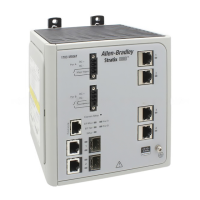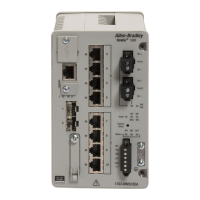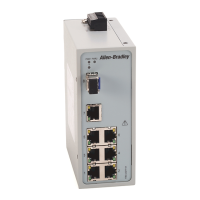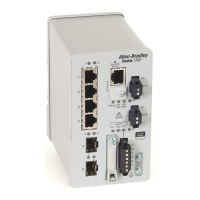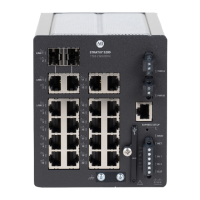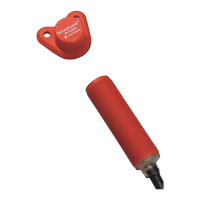Rockwell Automation Publication 1783-UM003G-EN-P - December 2012 39
Switch Software Features Chapter 2
DHCP Persistence
Every device in an IP-based network must have a unique IP address. The
Dynamic Host Configuration Protocol (DHCP) automatically assigns IP
address information from a pool of available addresses to newly connected devices
(DHCP clients) in the network. If a device leaves and then re-joins the network,
the device receives the next available IP address, which might or might not be the
same address that it had before.
The switch can be set to operate as a DHCP server to provide DHCP
persistence. With DHCP persistence, you can assign a specific IP address to each
port, ensuring that the device attached to a given port will get the same IP
address.
The DHCP Server will also serve addresses to BOOTP clients.
CIP Sync Time
Synchronization (Precision
Time Protocol [PTP])
The IEEE 1588 standard defines a protocol called Precision Time Protocol
(PTP) that enables precise synchronization of clocks in measurement and control
systems. We refer to this as CIP Sync time synchronization. The clocks are
synchronized over the EtherNet/IP communication network. PTP enables
systems that include clocks of various precision, resolution, and stability to
synchronize. PTP generates a Master-Slave relationship among the clocks in the
system. All clocks ultimately derive their time from a clock selected as the
Grandmaster clock.
Resilient Ethernet Protocol
(REP)
The Resilient Ethernet Protocol (REP) provides an alternative to Spanning Tree
Protocol (STP) to control network rings and loops, handle link failures, and
improve convergence time. REP controls a group of ports connected in a
segment, ensures that the segment does not create any bridging loops, and
responds to link failures within the segment. REP provides a basis for
constructing more complex networks and supports VLAN load balancing.
REP is a segment protocol. One REP segment is a chain of ports connected to
each other and configured with a segment ID. Each segment consists of standard
(transit) segment ports and two user-configured edge ports. A switch can have no
more than two ports that belong to the same segment, and each segment port can
have only one external neighbor. A segment can go through a shared medium, but
on any link only two ports can belong to the same segment. REP is supported
only on Layer 2 trunk interfaces. Selecting the Switch for Automation Smartport
enables Layer 2 trunking. REP is supported on EtherChannels, but not on an
individual port that belongs to an EtherChannel.
To make sure DHCP persistence works correctly, follow the
application rules. Refer to Configure DHCP Persistence on page
71.
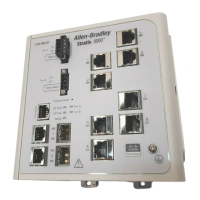
